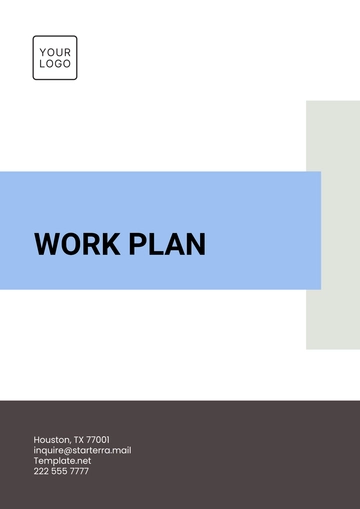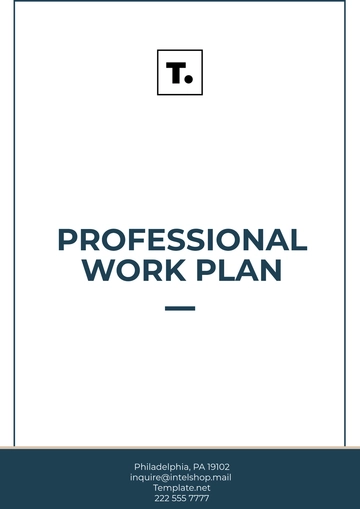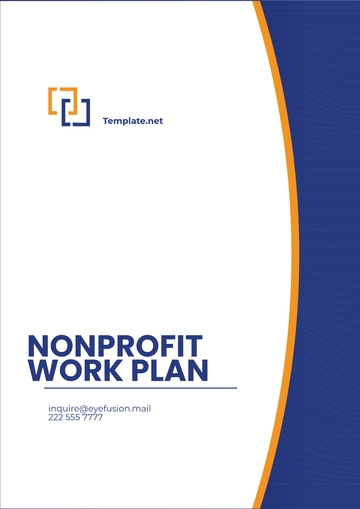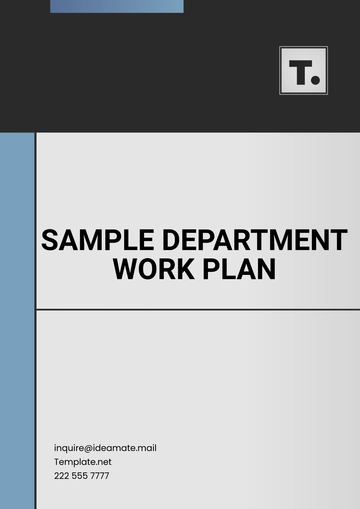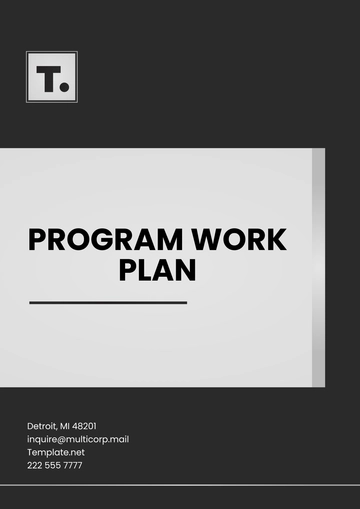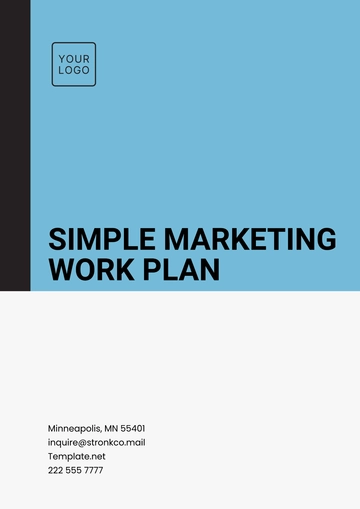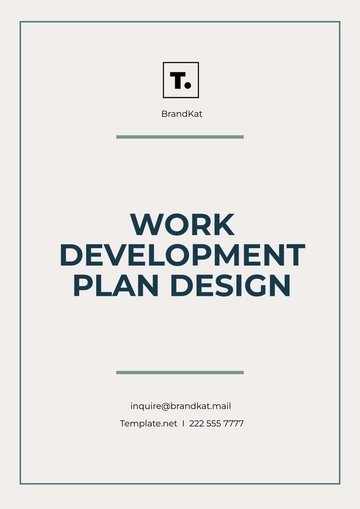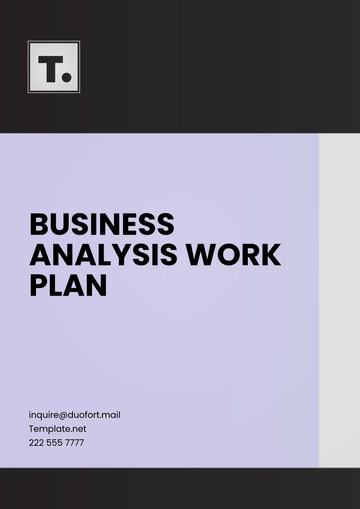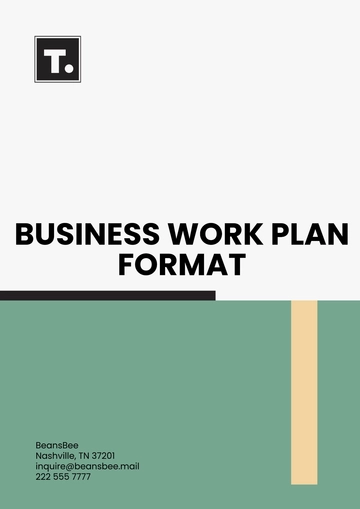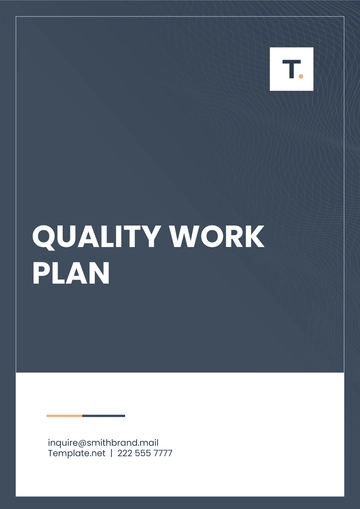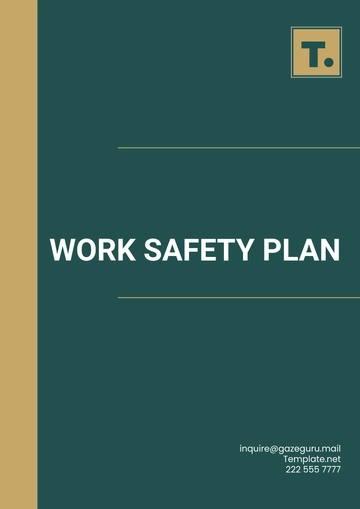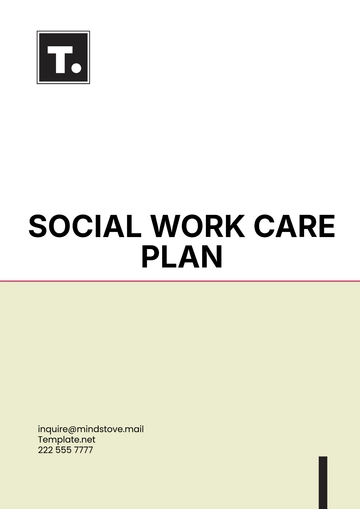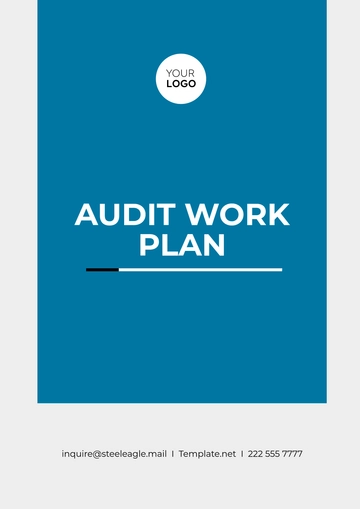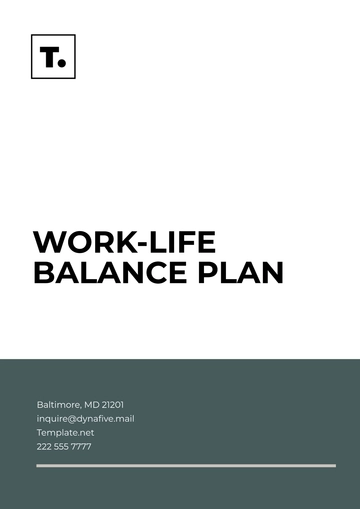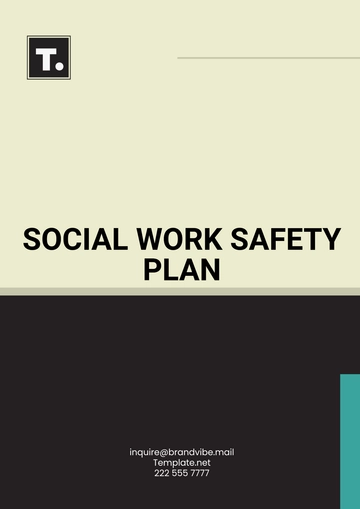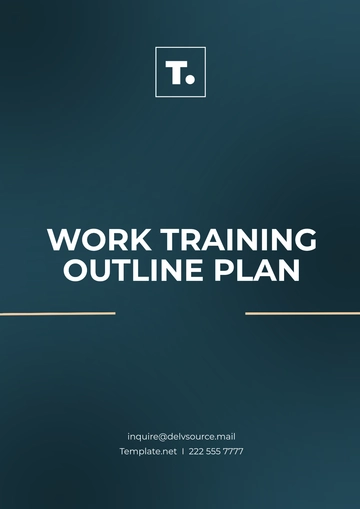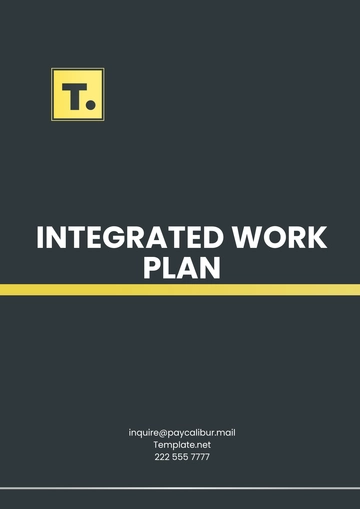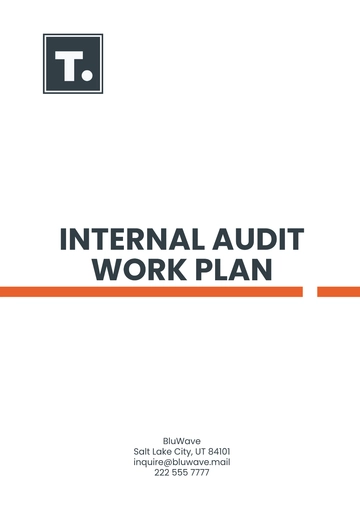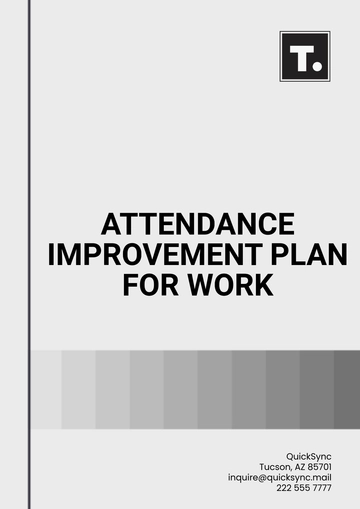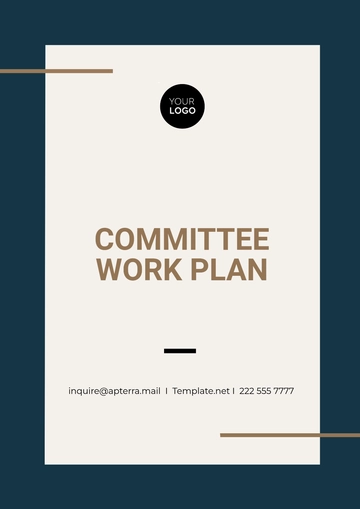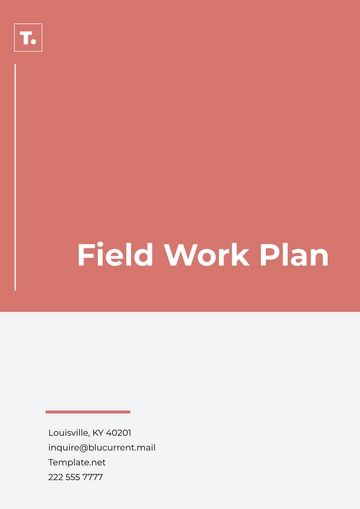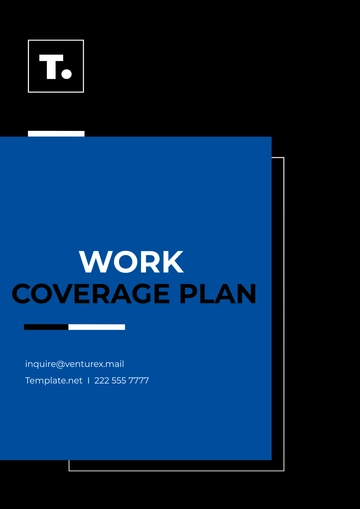Free Simple Work Plan
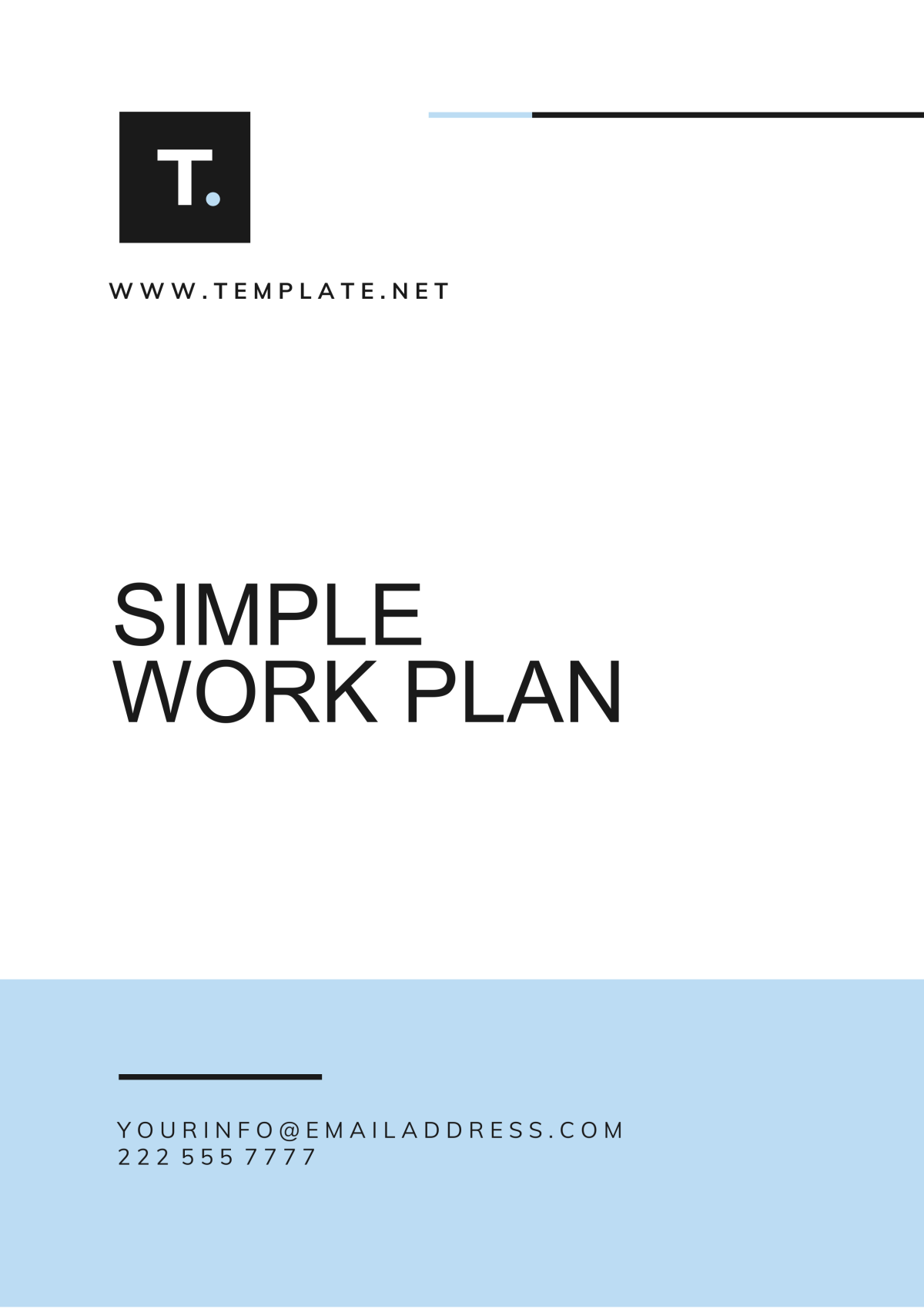
Name: | [Your Name] |
Company: | [Your Company Name] |
Department: | [Your Department] |
Date: | [Date] |
I. Introduction
In this section, provide a brief overview of the project or task at hand, including its objectives, scope, and any relevant background information. [Your Name] will lead the team in executing this project, ensuring timely delivery and adherence to quality standards.
II. Project Objectives
[Objective 1]: Begin by outlining the primary objectives of the project. This could include specific deliverables, milestones, or goals that need to be achieved.
[Objective 2]: Next, detail any secondary objectives that support the main goals. These might involve tasks or activities that contribute to the overall success of the project.
III. Scope of Work
A. In-Scope Activities
[Activity 1]: Describe the tasks or activities that are within the scope of this project. Be specific about what will be done and by whom.
[Activity 2]: List any additional tasks or responsibilities that fall under the project's scope but haven't been mentioned yet.
B. Out-of-Scope Activities
[Activity 1]: Identify any activities or tasks that are explicitly not included in this project's scope. This helps to manage expectations and prevent scope creep.
[Activity 2]: Clarify any gray areas where there might be confusion about what is and isn't included in the project scope.
IV. Timeline and Milestones
A. Timeline
Task | Start Date | End Date | Assigned To |
|---|---|---|---|
[Task 1] | [Start Date] | [End Date] | [Assignee] |
[Task 2] | [Start Date] | [End Date] | [Assignee] |
[Task 3] | [Start Date] | [End Date] | [Assignee] |
B. Milestones
[Milestone 1]: Specify key milestones and their associated dates. These serve as checkpoints to track progress and ensure alignment with project timelines.
[Milestone 2]: Highlight any critical milestones that have dependencies or significant implications for the project's success.
V. Resource Allocation
In this section, outline the resources required to complete the project successfully. This includes human resources, materials, equipment, and any other necessary assets.
[Resource 1]: Specify the type and quantity of resources needed, along with any specific requirements or constraints.
[Resource 2]: Identify who will be responsible for procuring or managing each resource throughout the project lifecycle.
VI. Risk Management
A. Identification
[Risk 1]: Identify potential risks or obstacles that could impact the project's progress or outcomes. These could be internal or external factors.
[Risk 2]: Assess the likelihood and potential impact of each risk to prioritize mitigation efforts effectively.
B. Mitigation Strategies
[Risk 1]: Develop strategies to mitigate or address the identified risks, minimizing their impact on the project.
[Risk 2]: Assign responsibilities for implementing and monitoring these mitigation strategies to ensure proactive risk management.
VII. Communication Plan
Outline the communication channels, frequency, and stakeholders involved in project updates and reporting.
[Channel 1]: Specify the primary communication channels for sharing project updates, such as email, meetings, or project management software.
[Channel 2]: Identify key stakeholders who need to be kept informed about the project's progress, including their roles and responsibilities.
- 100% Customizable, free editor
- Access 1 Million+ Templates, photo’s & graphics
- Download or share as a template
- Click and replace photos, graphics, text, backgrounds
- Resize, crop, AI write & more
- Access advanced editor
You may also like
- Finance Plan
- Construction Plan
- Sales Plan
- Development Plan
- Career Plan
- Budget Plan
- HR Plan
- Education Plan
- Transition Plan
- Work Plan
- Training Plan
- Communication Plan
- Operation Plan
- Health And Safety Plan
- Strategy Plan
- Professional Development Plan
- Advertising Plan
- Risk Management Plan
- Restaurant Plan
- School Plan
- Nursing Home Patient Care Plan
- Nursing Care Plan
- Plan Event
- Startup Plan
- Social Media Plan
- Staffing Plan
- Annual Plan
- Content Plan
- Payment Plan
- Implementation Plan
- Hotel Plan
- Workout Plan
- Accounting Plan
- Campaign Plan
- Essay Plan
- 30 60 90 Day Plan
- Research Plan
- Recruitment Plan
- 90 Day Plan
- Quarterly Plan
- Emergency Plan
- 5 Year Plan
- Gym Plan
- Personal Plan
- IT and Software Plan
- Treatment Plan
- Real Estate Plan
- Law Firm Plan
- Healthcare Plan
- Improvement Plan
- Media Plan
- 5 Year Business Plan
- Learning Plan
- Marketing Campaign Plan
- Travel Agency Plan
- Cleaning Services Plan
- Interior Design Plan
- Performance Plan
- PR Plan
- Birth Plan
- Life Plan
- SEO Plan
- Disaster Recovery Plan
- Continuity Plan
- Launch Plan
- Legal Plan
- Behavior Plan
- Performance Improvement Plan
- Salon Plan
- Security Plan
- Security Management Plan
- Employee Development Plan
- Quality Plan
- Service Improvement Plan
- Growth Plan
- Incident Response Plan
- Basketball Plan
- Emergency Action Plan
- Product Launch Plan
- Spa Plan
- Employee Training Plan
- Data Analysis Plan
- Employee Action Plan
- Territory Plan
- Audit Plan
- Classroom Plan
- Activity Plan
- Parenting Plan
- Care Plan
- Project Execution Plan
- Exercise Plan
- Internship Plan
- Software Development Plan
- Continuous Improvement Plan
- Leave Plan
- 90 Day Sales Plan
- Advertising Agency Plan
- Employee Transition Plan
- Smart Action Plan
- Workplace Safety Plan
- Behavior Change Plan
- Contingency Plan
- Continuity of Operations Plan
- Health Plan
- Quality Control Plan
- Self Plan
- Sports Development Plan
- Change Management Plan
- Ecommerce Plan
- Personal Financial Plan
- Process Improvement Plan
- 30-60-90 Day Sales Plan
- Crisis Management Plan
- Engagement Plan
- Execution Plan
- Pandemic Plan
- Quality Assurance Plan
- Service Continuity Plan
- Agile Project Plan
- Fundraising Plan
- Job Transition Plan
- Asset Maintenance Plan
- Maintenance Plan
- Software Test Plan
- Staff Training and Development Plan
- 3 Year Plan
- Brand Activation Plan
- Release Plan
- Resource Plan
- Risk Mitigation Plan
- Teacher Plan
- 30 60 90 Day Plan for New Manager
- Food Safety Plan
- Food Truck Plan
- Hiring Plan
- Quality Management Plan
- Wellness Plan
- Behavior Intervention Plan
- Bonus Plan
- Investment Plan
- Maternity Leave Plan
- Pandemic Response Plan
- Succession Planning
- Coaching Plan
- Configuration Management Plan
- Remote Work Plan
- Self Care Plan
- Teaching Plan
- 100-Day Plan
- HACCP Plan
- Student Plan
- Sustainability Plan
- 30 60 90 Day Plan for Interview
- Access Plan
- Site Specific Safety Plan
